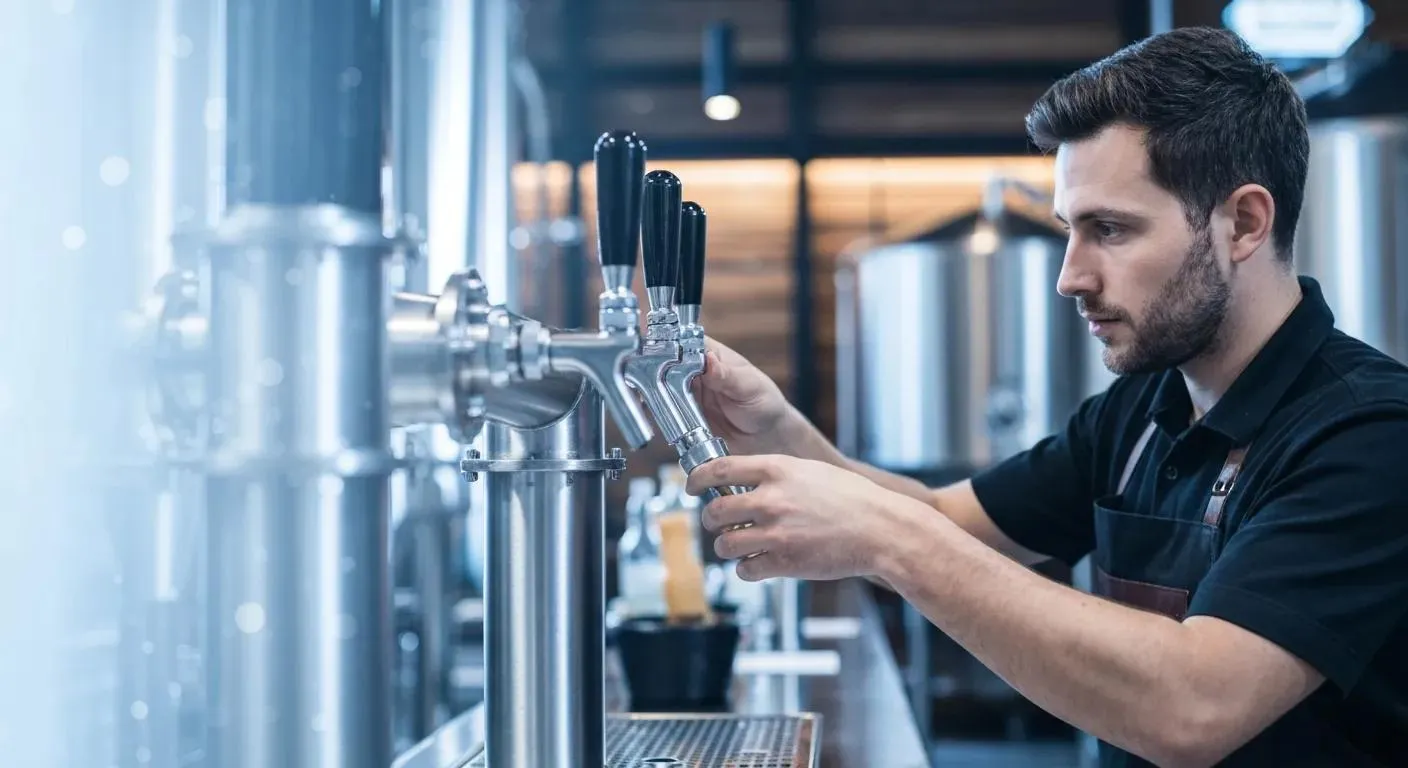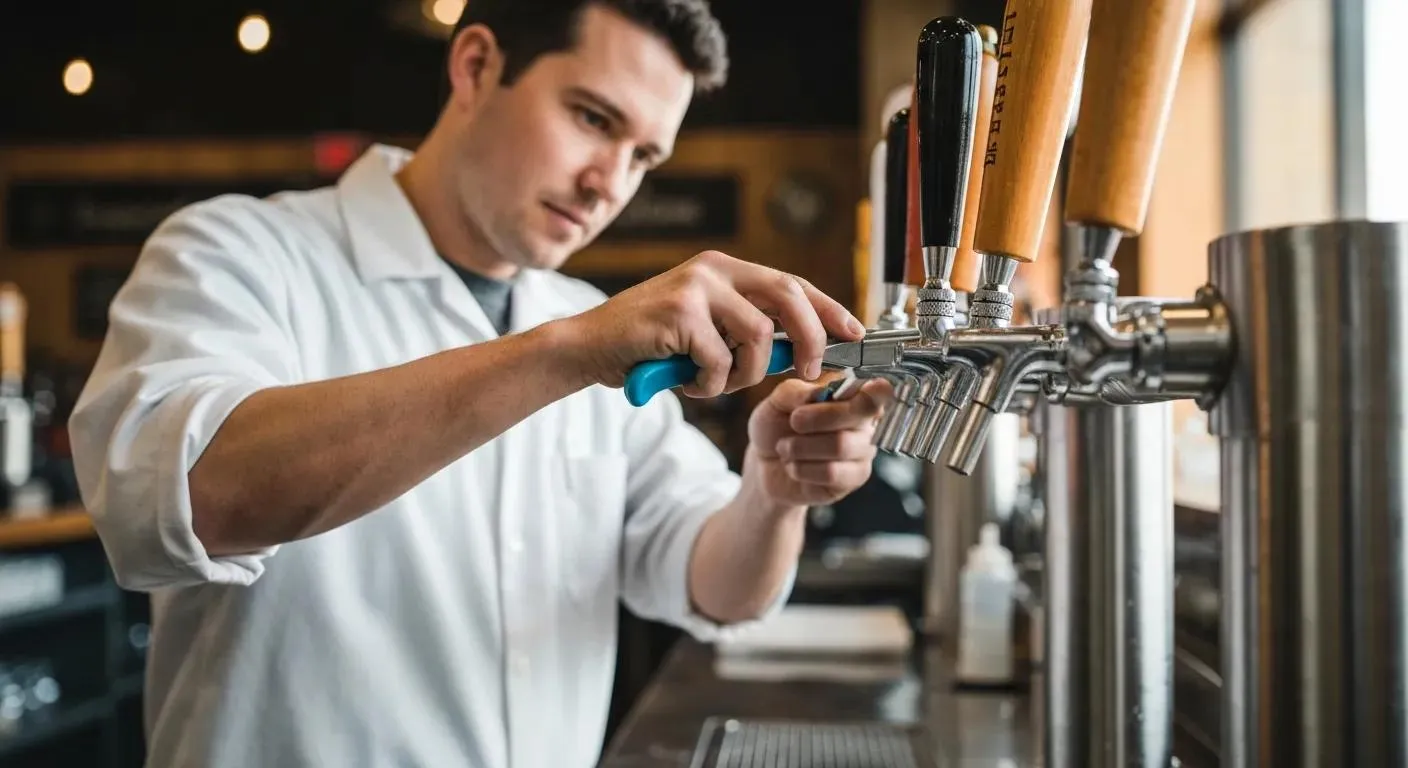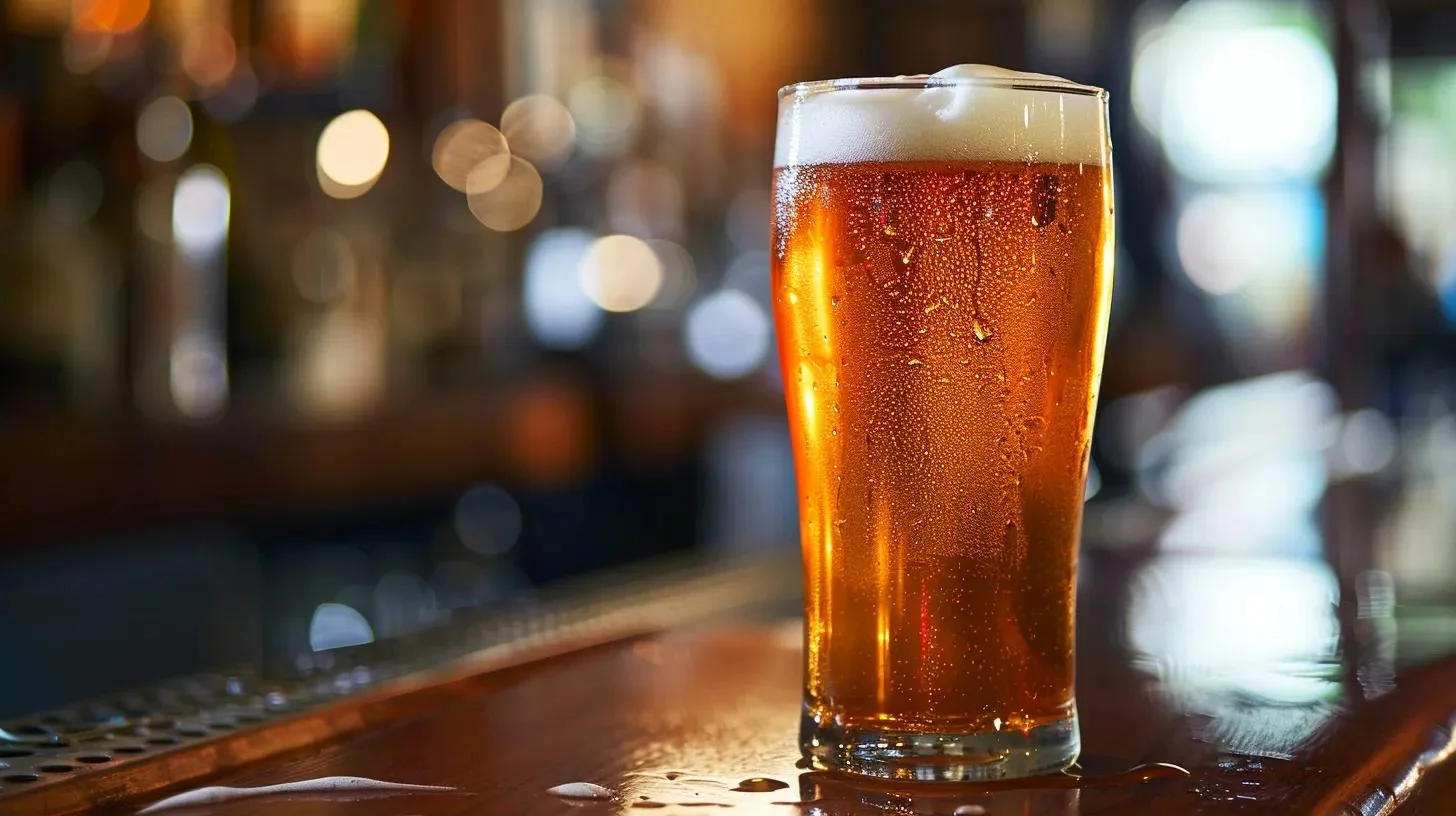Beer Clean Glass: Enhancing Your Drinking Experience with a Spotless Glass

The concept of "beer clean" glassware beer clean only" refers to glassware that is free of any impurities, residues, or oils that could potentially alter the appearance, aroma, and flavor of a beer served in it. A beer clean glass allows for proper foam formation and lacing during consumption, ensuring that the beer not only looks its best but also tastes as the brewer intended. A well-maintained glass not only enhances a beer's sensory experience but also demonstrates a commitment to quality and attention to detail by the establishment serving it.
To achieve a beer clean glass, it is crucial to understand the common impurities that can compromise a beer's presentation and taste, such as residual detergents or grease. Proper cleaning, drying, and storage techniques can help prevent these impurities and ensure a consistently beer-clean serving experience. Additionally, selecting the appropriate glassware for different beer styles and maintaining it correctly contributes to the overall enjoyment of the beverage.
Key Takeaways
- A beer clean glass is free of impurities, enhancing the beer's taste, aroma, and visual presentation.
- Proper cleaning, drying, and storage techniques are essential in achieving and maintaining a beer clean glass.
- Choosing the right glassware for different beer styles and maintaining it properly contributes to an optimal beer-drinking experience.
The Importance of Beer Clean Glassware
Defining 'Beer Clean'
"Beer clean" refers to a glassware beer that has been thoroughly cleaned to remove all traces of grease, oils, and residues. This cleanliness allows the beer to maintain its desired taste, aroma, and visual characteristics. Properly cleaned glassware should not have any lingering odors or visible markings on its surface. To achieve a beer-clean glass, it is crucial to use a suitable odorless, non-fat detergent and clean the glass with a hot water source.

Impact on Beer Quality
Achieving beer clean glassware is essential for several aspects of beer enjoyment, including:
- Taste: Clean glassware helps preserve the intended flavor of the beer by preventing contamination from residues or lingering flavors from previous beverages.
- Aroma: A beer-clean glass ensures that the aroma of the beer remains unaltered, allowing beer drinkers to enjoy the full bouquet in each sip.
- Head Retention: Properly cleaned glassware promotes better head retention, enhancing the beer's appearance and mouthfeel. In a beer clean glass, the beer's foam is more stable and lasts longer source.
- Lacing: Beer clean glassware allows for better lacing, which refers to the foam pattern left by the beer's head on the glass as it is consumed.
Furthermore, performing a salt test can help determine if a glass is beer-clean. Wet the inside of the glass and sprinkle salt all over the glass to free the interior, if the salt adheres evenly to the glass surface it's beer clean, otherwise, if there is grease, oil, or residue, the salt distribution will be uneven.
In summary, beer clean glassware plays a crucial role in enhancing overall beer quality and enjoyment by preserving the taste, aroma, head retention, and lacing of the beer. Proper cleaning techniques and regular maintenance guaranteed beer clean results should be practiced to ensure optimal results.
Identifying and Preventing Glassware Impurities
Common Contaminants
In the pursuit of a perfect beer-drinking experience, it is crucial to ensure that your glassware is free from common contaminants such as detergent residue, dust, oil, and grease. These impurities can create an invisible film on the side of the glass that affects the beer's appearance, taste, and aroma. Proper cleaning and storage practices can help prevent the presence of these contaminants.
- Detergent residue: Improper rinsing or air drying after washing can leave behind a thin film of detergent.
- Dust: Dust can accumulate in glasses left unused for a period of time or placed in open storage spaces.
- Oil and grease: These contaminants can result from handling the glass with unclean hands, using oily dishcloths, or inadequate cleaning of glassware.
The Salt Test
The salt test is a simple and effective way to check for the presence of invisible film on your beer glass. To perform this test, simply:
- Wet the inside of the glass with water.
- Sprinkle a small amount of salt over the wet surface.
- Gently roll the glass, allowing the salt to coat the entire inner surface.
- Inspect for areas where the salt does not adhere, which indicates the presence of impurities.
If the salt test reveals any inconsistencies, the glass should be cleaned again to ensure it is beer-clean before use.
Lacing Test
Another method of determining the cleanliness of your glassware is the beer lacing test. This test involves examining the pattern of the beer's foam on the glass as it is consumed. A beer-clean glass should exhibit the following characteristics:
- A proper foam head formed at the top of the glass.
- Persistent lacing on the sides of the glass as the beer is consumed.
- No patches of bubbles stuck to the glass in the liquid beer.

By ensuring the cleanliness of your glassware, you can enhance the visual appeal, taste, and aroma of your beer, providing a more satisfactory experience. Paying attention to these details will help prevent any negative impact on the overall enjoyment of your drink.
Proper Glassware Cleaning Techniques
Maintaining clean beer glasses is essential for ensuring great taste and presentation. There are several methods for cleaning glassware, and this section covers manual washing, mechanical washing, and rinsing and sanitizing.
Manual Washing
Manual washing is preferred for delicate glassware and can be done effectively with a three-tub sink method.
- First, fill the sink with warm water and a mild dishwashing soap.
- Then, fill the second sink with hot water. This is for rinsing off the soap.
- The last sink should be filled with a sanitizing solution that meets your local health department standards.
Before washing, inspect the glasses for lipstick stains, fingermarks, or other residues before washing. In the soapy water sink, use a cleaning brush to scrub the inside and outside of the wash glasses thoroughly, making sure to reach all areas at the bottom of the glass. Next, dip the glass in hot water to rinse off all soap residues completely. Finally, submerge the glass in the sanitizing solution for the recommended time before removing it and air-drying it on a clean rack.
Mechanical Washing
Mechanical washing involves using a glass washing machine or dishwasher, which can effectively clean and sanitize larger quantities of glassware. Choose a machine specifically designed for glassware to avoid damaging the glasses through harsh cleaning cycles. Ensure that the dishwasher's water temperature is at least 160°F (71°C) for proper sanitization.
Load glassware with enough space between them to prevent contact and breakage. Run the machine with the appropriate manufacturer-recommended dishwashing detergents and sanitizing solution. After the wash cycle, remove and inspect the glasses for any remaining residue, ensuring that they are beer-clean before air-drying on a clean rack.
Rinsing and Sanitizing
Even after washing, beer glasses should be thoroughly rinsed and sanitized before use. Rinsing with cold water helps to remove any remaining detergent or sanitizer residues and prevents new contaminants from adhering. A quick dip in a sanitizer solution further ensures that the glass is clean and germ-free before pouring the beer.
Drying and Storage Solutions for Beer Glasses
Air Drying
Air drying is an efficient and cost-effective method to dry beer glasses. To encourage proper air circulation, place the glasses upside down on a clean surface, such as a drying mat or a wire rack. This method allows the water to drip off, reducing water spots and potential residue. For optimum results, dry your beer glasses in an area with good air circulation, away from dust and other contaminants.
Tips for Preventing Water Spots
Preventing water spots on beer glasses is essential for maintaining optimal appearance and taste. Follow these tips to ensure a spot-free shine:
- Drip dry method: Properly using the drip dry method can prevent water spots. Make sure to place the glasses upside down on a clean surface and in an area with good air circulation to encourage quicker drying time.
- Polish with a microfiber cloth: When your beer glasses are almost dry, polish them with a lint-free microfiber cloth. This step can help remove any remaining spots and add a touch of shine to the glassware.
Following these strategies will ensure that your beer glasses are properly dried and free from water spots, allowing for an optimal beer-drinking experience.
Selecting and Maintaining Beer Glassware
Choosing the Right Glassware for Beer Types
Selecting the appropriate glassware for different types of beer is essential for enhancing the drinking experience. The shape of a beer glass can influence the aroma, flavor, and presentation of the beer. Some common types of beer glasses include:
- Pilsner glasses: Tall, slender, and tapering upwards, suitable for light lagers and pilsners.
- Tulip glasses: Curved shape with a flared top, ideal for Belgian ales and IPAs.
- Mugs and steins: Sturdy, large, and heavy, suitable for most beer styles, especially lagers.
- Snifters: Wide bottom and tapered top, designed for capturing the aroma of strong beers like barley wines or stouts.
Always ensure that the chosen glassware is beer clean, which is essential for proper beer head, formation, and lacing on the glass, ultimately bringing out the best in your beer.
When to Replace Glassware
Over time, glassware can accumulate scratches, chips, and residual deposits that can compromise the quality of the beer-drinking experience. This is why it's important to inspect your beer glasses for signs of wear and tear. Replace glassware that exhibits any of the following:
- Deep scratches or cracks that can harbor germs and bacteria
- Chipped or broken rims or bases that can pose safety hazards
- Faded or worn-out logos, especially in a commercial setting
Proper care and maintenance of your beer glasses can prolong their lifespan. Here are some tips for maintaining beer glassware:
- Clean glasses with hot water and a non-petroleum-based soap to remove residue that can kill beer foam.
- Scrub the entire surface of the glass and rinse thoroughly with cold water.
- Always air-dry glasses upside down on a clean, non-absorbent surface.
Following these practices will help you maintain a collection of beer glasses that remain visually appealing and functionally optimal for enjoying various types of beer.
Frequently Asked Questions
How can I ensure my beer glasses are 'beer clean'?
To ensure your beer glasses are 'beer clean', begin by washing them with hot, soapy water. Next, rinse them thoroughly and perform a salt test by wetting the inside of the glass and sprinkling salt on the sides. Salt should adhere evenly to a clean glass. Inspect any areas where salt does not adhere, as they may indicate dirtiness.
What is the most effective method for cleaning beer glasses?
The most effective method for cleaning beer glasses is to use hot, soapy water and a dedicated glass brush. Ensure the brush bristles are soft and non-abrasive to avoid scratching the glass. Manual washing is typically preferred for achieving a beer-clean glass.
Can I use a dishwasher to properly wash beer glasses?
While a dishwasher can clean beer glasses to some extent, it is not the best method for achieving 'beer clean' glassware. The high heat and harsh chemicals found in dishwasher detergents can potentially damage your glasses over time, and may leave residue behind that can affect beer taste and quality.
What are the signs of a glass that isn't 'beer clean'?
A beer glass that isn't 'beer clean' may have visible residue or streaks on the surface. When beer is poured into a non-beer clean glass, bubbles may cling to the sides, making the creamy head of the beer look less appealing and potentially affecting the taste. Properly clean glass will have a proper foam head and uniform lacing.
What procedures should be followed for washing glasses in a bar setting?
In a bar setting, it's essential to have a proper glass-washing station with a three-compartment sink system. The first compartment should contain hot, soapy water for cleaning; the second should have clean water for rinsing; and the third should have a sanitizer solution for final disinfection. After cleaning, rinse glasses in hot water and allow them to air dry on a clean rack before use. This method helps maintain proper hygiene standards specifically for beer glasses in a bar environment.
Summary
A beer-clean glass is essential to uphold the quality of the draught beer quality manual being served and maintain the integrity of its taste and presentation. According to the Brewer's Association Draught Beer Quality Manual, a beer-clean glass forms a proper foam head, allows lacing during consumption, and never shows patches of bubbles stuck to the sides of the glass in the liquid beer. Ensuring glassware is beer-clean plays a vital role in providing an optimal beer-drinking experience.
Several methods and tools can help transform regular, non-beer-clean glassware into beer-clean glassware. Some of these techniques include using appropriate detergents, brushes designed for glassware cleaning, proper rinsing, and air drying. Adhering to these practices ensures that the glassware remains free from residue, maintaining the beer's desired quality and appearance.
In conclusion, the proper care of glassware can greatly enhance the experience of beer drinkers. Implementing beer-clean glass practices is a necessary step in providing an exceptional beer experience for customers, preserving the beverage's taste and presentation.
For any questions please reach out to us at Renny's Draft Solutions and I encourage you to check out the rest of our beer education blog.



